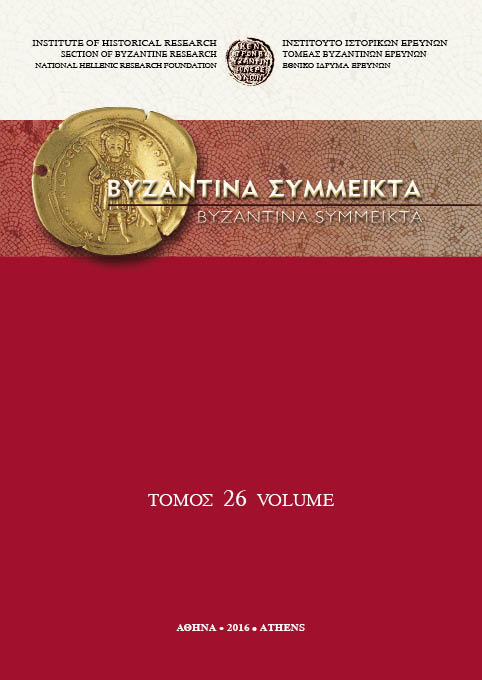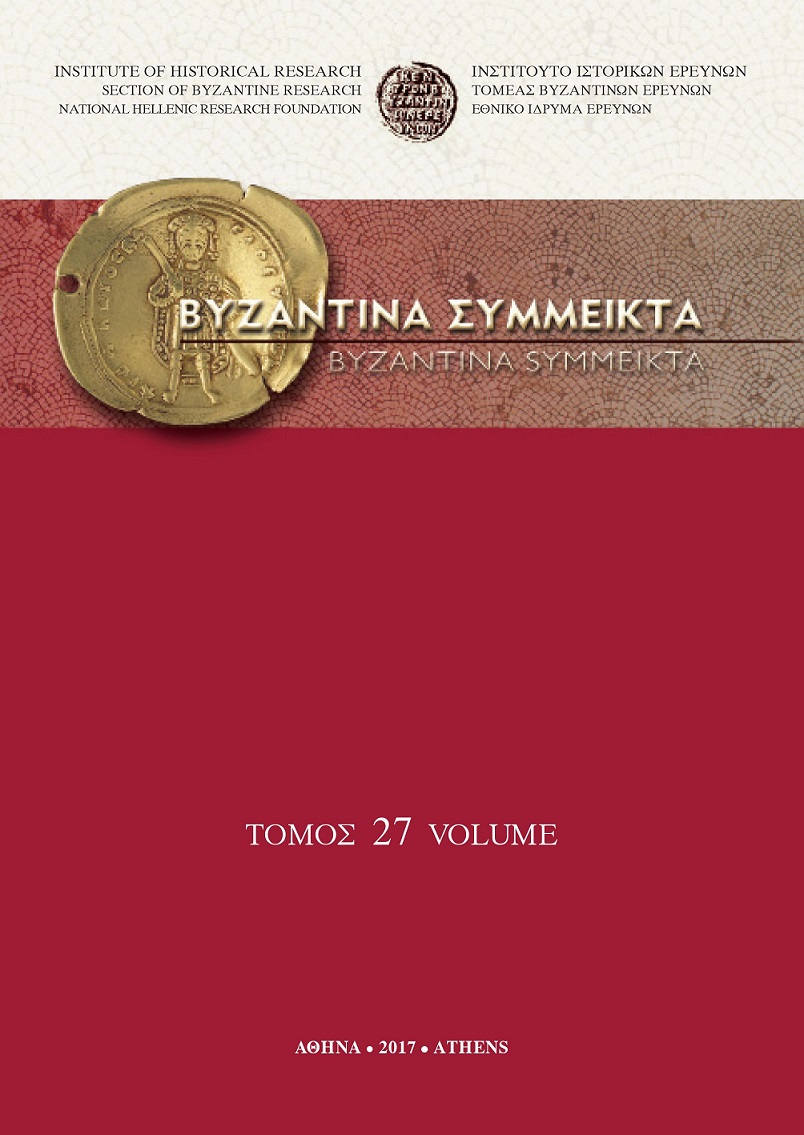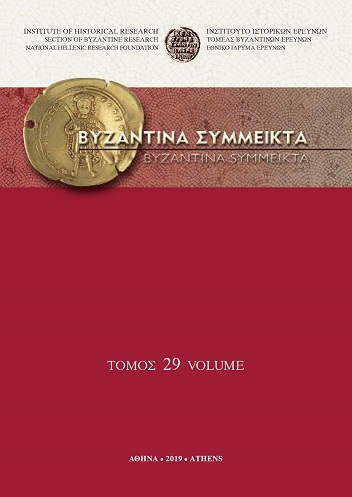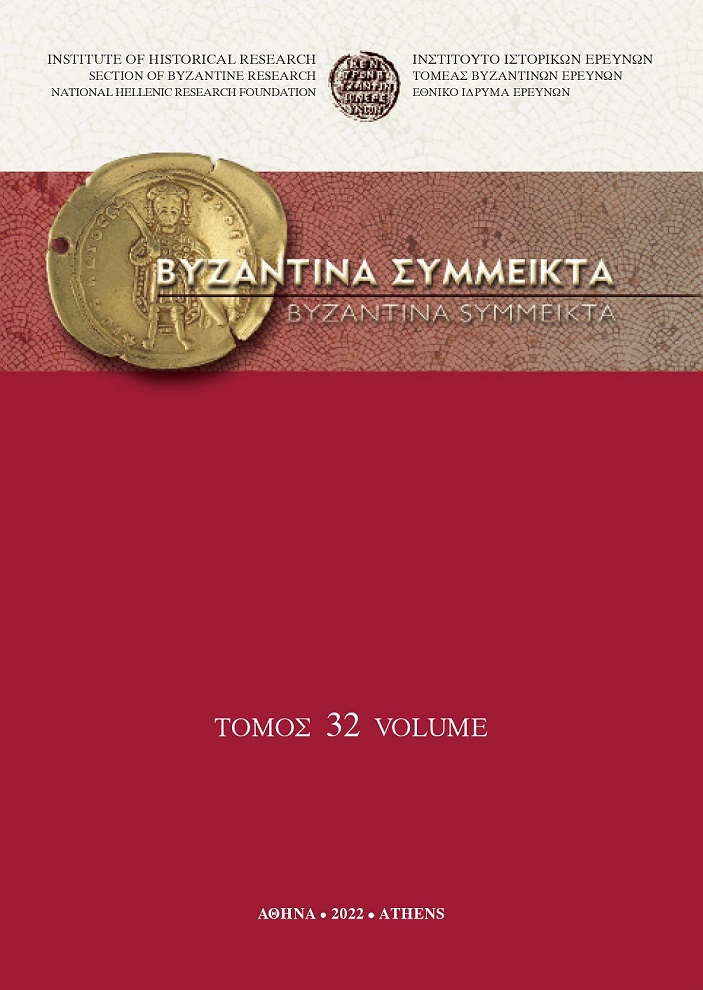Παρατηρήσεις στο «Οδοιπορικόν» του Κωνσταντίνου Μανασσή.

Abstract
SOME OBSERVATIONS ON CONSTANTINE MANASSES' ITINERARY.
ΤHE MOTIFS OF THE TEMPEST AND THE DRAUGHT
The purpose of this paper is to present and examine two key-motifs - that of the tempest and the drought-in Constantine Manasses’ Itinerary -a 12th century poem reciting the narrator’s dreadful experiences during his trip to Palestine, on an official mission by emperor Manuel Komnenos In the four chapters of the poem, these two motifs are treated in a literate, as well as a figurative way (as far as the tempest is concerned, a topos in the 12th century literature), in order to convey the narrator’s own misfortunes and woes, including the two illnesses he suffered from, while residing in Tyros and Cyprus, respectively. Furthermore, the presence and the combination of the aforementioned motifs hold a significant position in the macrostructure of the Itinerary. Among other things, the study of the way Manasses uses these motifs intents to highlight the poet’s skilful art.
Article Details
- How to Cite
-
ΧΡΥΣΟΓΕΛΟΣ Κ. (2013). Παρατηρήσεις στο «Οδοιπορικόν» του Κωνσταντίνου Μανασσή. Byzantina Symmeikta, 23, 33–43. https://doi.org/10.12681/byzsym.1089
- Issue
- BYZANTINA SYMMEIKTA 23
- Section
- Articles

This work is licensed under a Creative Commons Attribution-NonCommercial-ShareAlike 4.0 International License.
Copyright: The copyright for articles in this journal is retained by the author(s), with first publication rights granted to the journal. By virtue of their appearance in this open access journal, articles are free to use (with the exception of the non-granted right to make derivative works) with proper attribution for non-commercial uses (licence Creative Commons 4.0). NHRF retains the worldwide right to reproduce, display, distribute, and use articles published in BYZANTINA SYMMEIKTA in all formats and media, either separately or as part of collective works for the full term of copyright. This includes but is not limited to the right to publish articles in an issue of the Journal, copy and distribute individual reprints of the articles, authorize reproduction of articles in their entirety in another NHRF publication, and authorize reproduction and distribution of articles or abstracts thereof by means of computerized retrieval systems.






